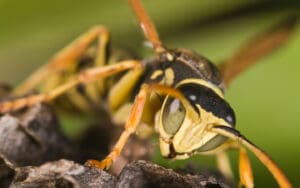It is a story repeated around the world: Bees are disappearing. They said the disappearance of honeybees would lead to food collapse. But the opposite is true. Worldwide bee populations have increased by nearly 50%.
Media shouts ‘bee-pocalypse’ and ‘bee-mageddon’!
In 2013, Time Magazine’s cover predicted: “A world without bees.” An NBC headline stated: “Bees are dying at an alarming rate.” A CNN headline stated: “One-third of the food we eat is at risk because the climate crisis is endangering butterflies and bees.”
The media had found a topic that was alarming people and they stayed on the story.
A CNN headline stated: “Bees are dying – what can we do about it?” Another hyperbole CNN headline stated: “Arizona’s extreme heat is killing honeybees and melting their homes.” But ask anyone who lives in southern Arizona – where bees are active year-round – there is no shortage of bees. In fact, every year, people are attacked by swarms of the so-called Africanized “killer bees.”
A YouTube video with 15 million views claimed bees were still dying in masses in 2015. The author claimed that the loss of bees would lead to “one-third of all the food humans consume would disappear with them. Millions could starve.”
The New York Times went even further in 2018, declaring “The Insect Apocalypse Is Here,” and warning our food supply will collapse.
Media myth: There is no bee-pocalypse
Journalist John Stossel, a former host at both ABC and Fox, who was known for his consumer advocacy recently released a video entitled: “The Bee-pocalypse: Another Scare Story the Media Got Wrong.” Stossel worked with Jon Entine of the Genetic Literacy Project to dispel this media myth about bees.
“We’re not facing a honeybee or insect apocalypse as so many activists claim and the media misreports,” wrote Jon Entine. “For honeybees, there are health problems related to the varroa mite destructor and climate change but it’s never been better in terms of the numbers of bees.”
“Claims of a bee-mageddon originated with environmental groups determined to stigmatize neonicotinoids and other crop chemicals,” Entine continued. “It was a backdoor way to attack what they claim is the threat of Big Ag, their biggest hyped bugaboo. It was never science-based.”
“We’re not in any way facing an apocalypse,” Entine added. “Things have never been better in terms of the numbers of bees.”
“They could have just Googled bee population and they would’ve seen them going up?” Stossel asked.
“Absolutely,” Entine replied. “It’s farcical.”
Bee colonies increased by nearly 50% worldwide
According to international statistics on beekeeping by DeStatis, the number of bee colonies worldwide in 2021 was 101.6 million, an increase of 46.8% since 1990. During those years, on a continental basis, Europe saw an increase of 11.6%, the Americas saw an increase of 19.8%, Africa saw an increase of 38.4%, and Asia experienced a huge increase of 95.7%
Some small collapses occurred in North America and the US
From 1990 to 2021, North America did see a decrease of 8.5% as there have been some issues with “colony collapse disorder.” This was a problem in the United States about 20 years ago. No one knows what caused it, but it has mostly steadily diminished.
In the US, in 2022, operations with five or more colonies cited varroa mites as the number one stressor of bee colonies in about 50% of cases. The second stressor was attributed to colony collapse disorder in about 25 percent of cases.
In 2013, Canada had 667.4 million bee colonies. The number steadily climbed and by 2021 had reached 834.26 million. 2022 saw a slight dip to 766.87 million, and a slight increase in 2023 to 794.34 million. The overall trend for bee populations in Canada has been an increase.









